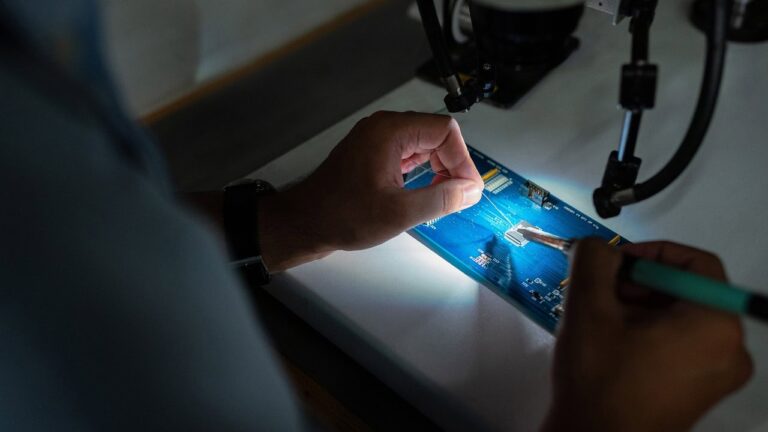The Importance Of STEM Education Initiatives

In today’s rapidly evolving world, education systems globally are recognizing the imperative to adapt and innovate. At the forefront of this educational transformation is STEM education, an interdisciplinary approach that integrates Science, Technology, Engineering, and Mathematics. The aim is to equip students with critical thinking, problem-solving, and innovative skills necessary for the 21st century.
Why STEM Education Matters
STEM education is not just about teaching students facts and figures. It’s about fostering a mindset that thrives on curiosity, experimentation, and innovation. With technological advancements accelerating at an unprecedented pace, STEM skills are crucial for future careers. According to the U.S.
Bureau of Labor Statistics, STEM occupations are projected to grow by 8% from 2019 to 2029, outpacing non-STEM jobs significantly. This growth underscores the demand for a workforce well-versed in STEM disciplines.
Closing the Skills Gap
One of the primary objectives of STEM education initiatives is to bridge the skills gap. As industries increasingly rely on technology and data-driven decision-making, the need for skilled professionals in these areas becomes critical.
By integrating STEM into early education, students can develop the necessary competencies to succeed in high-demand roles, from engineers and data analysts to computer scientists and biotechnologists.
Encouraging Diversity in STEM Fields
An equally important aim of STEM initiatives is to promote diversity within STEM fields. Historically, these fields have been dominated by certain demographics, but contemporary initiatives strive to create inclusive environments that encourage participation from underrepresented groups.
Programs aimed at young girls, minorities, and students from low-income backgrounds are crucial in cultivating a diverse and innovative workforce.
Innovative STEM Education Initiatives
Many organizations and educational institutions are spearheading innovative initiatives to enhance STEM education. These programs range from government-led initiatives to private sector partnerships, each with unique approaches to fostering STEM learning.
Government Initiatives
Governments worldwide are investing in STEM education to ensure competitiveness in the global economy. For example, the U.S. Department of Education has launched the STEM Education Strategic Plan, which focuses on increasing STEM access and equity.
Similarly, the European Union’s Horizon Europe program allocates significant funding towards research and innovation, including STEM education initiatives.
Private Sector Partnerships
Corporations are also playing a vital role in promoting STEM education. Tech giants like Google, Microsoft, and Apple have developed programs targeting young learners.
Google’s Code with Google initiative offers resources for teachers to integrate coding into their classrooms, while Microsoft’s TEALS program pairs industry volunteers with educators to co-teach computer science.
Nonprofit Organizations
Nonprofits are instrumental in advancing STEM education, often focusing on underserved communities. Organizations like Girls Who Code and Black Girls Code empower young girls with the skills and confidence needed to pursue STEM careers.
These programs not only teach technical skills but also provide mentorship and networking opportunities.
Impactful Strategies in STEM Learning
Effective STEM education goes beyond traditional classroom settings. It involves hands-on, experiential learning that connects theoretical concepts to real-world applications. Here are some impactful strategies employed by STEM education initiatives:
Project-Based Learning
Project-based learning (PBL) is a dynamic classroom approach that encourages students to explore real-world problems and challenges. In STEM education, PBL allows students to apply their knowledge to design solutions, conduct experiments, and engage in critical thinking.
This approach not only enhances understanding but also instills a sense of ownership and accountability in students.
Maker Education
The maker movement emphasizes creativity, innovation, and hands-on learning. Maker education spaces, such as makerspaces and fab labs, provide students with tools and resources to design, prototype, and build projects. These environments encourage experimentation and risk-taking, essential components of STEM learning.
Online and Virtual Learning
The rise of digital technology has transformed how STEM education is delivered. Online platforms and virtual labs offer access to high-quality resources and interactive experiences.
Virtual reality (VR) and augmented reality (AR) technologies create immersive learning environments where students can explore complex scientific concepts in an engaging manner.
The Future of STEM Education
As we look towards the future, STEM education must continue to evolve to meet the changing demands of society and the economy. Key areas of focus include:
Integrating Arts into STEM
The integration of arts into STEM, known as STEAM, is gaining traction. By incorporating creative disciplines, students can develop a more holistic understanding of how STEM subjects intersect with art and design. This approach enhances innovation and creativity, vital skills in today’s interconnected world.
Personalized Learning
Advancements in technology are enabling personalized learning experiences tailored to individual student needs. Adaptive learning platforms use data analytics to provide customized content and feedback, ensuring students can progress at their own pace and receive support where needed.
Conclusion: Inspiring the Next Generation
STEM education initiatives are crucial in preparing students for a future where innovation and technology play a central role. By fostering curiosity, promoting diversity, and encouraging hands-on learning, these initiatives are inspiring the next generation of thinkers, creators, and leaders.
As we continue to invest in and evolve STEM education, we can look forward to a world where all students have the opportunity to thrive in a rapidly changing landscape.






